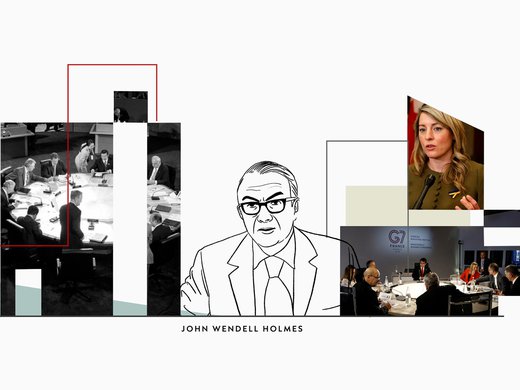Climate scientists have warned that unless global average temperature increases since pre-industrial levels are kept below 2 degrees Celsius, the world will face catastrophic environmental change (IPCC 2014). Never has the need for accurate and publicly accessible environmental information been so acute. The right of access to information is not new. The United Nations Educational, Scientific and Cultural Organization (UNESCO) adopts the expression Freedom of Information (FOI) to describe the right to access information held by public bodies, as an integral part of the fundamental right of freedom of expression (UNESCO n.d.). However, Resolution 59 adopted by the United Nations General Assembly during its first session in 1946 states that FOI implies the right to gather, transmit and publish news anywhere and everywhere without fetter, thus indicating its application is broader than access to information held only by public bodies.
The Rio Declaration on Environment and Development (UNEP 1992), in its Principle 10, proclaimed that:
environmental issues are best handled with participation of all concerned citizens, at the relevant level. At the national level, each individual shall have appropriate access to information concerning the environment that is held by public authorities, including information on hazardous materials and activities in their communities, and the opportunity to participate in decision-making processes. States shall facilitate and encourage public awareness and participation by making information widely available. Effective access to judicial and administrative proceedings, including redress and remedy, shall be provided.
Exercise of the right to environmental protection requires access to information. The right of access to environmental information was established by the Convention on Access to Information, Public Participation in Decision-Making and Access to Justice in Environmental Matters, most known as the Aarhus Convention, adopted by the United Nations Economic Commission for Europe (UNECE) and entered into force in 2001 (UNECE 1998). According to the Aarhus Convention, environmental information means:
any information in written, visual, aural, electronic or any other material form on:
(a) the state of elements of the environment, such as air and atmosphere, water, soil, land, landscape and natural sites, biological diversity and its components, including genetically modified organisms, and the interaction among these elements;
(b) factors, such as substances, energy, noise and radiation, and activities or measures, including administrative measures, environmental agreements, policies, legislation, plans and programmes, affecting or likely to affect the elements of the environment within the scope of subparagraph (a) above, and cost-benefit and other economic analyses and assumptions used in environmental decision-making;
(c) The state of human health and safety, conditions of human like, cultural sites and built structures, inasmuch as they are or may be affected by the state of the elements of the environment or, through these elements, by the factors, activities or measures referred to in subparagraph (b) above”.
The Aarhus Convention requires that, within the framework of national legislation, public authorities make environmental information available to the public in a transparent and effectively accessible manner (article 5) and respond to specific requests for environmental information by making that information publicly available (article 4).
The United Nations (UN) has recognized that the rapid pace of technological development enables individuals all over the world to use new information and communication technologies (UN 2013), and of course the right to access to environmental information must be updated to the digital age.
After the UN Conference on Sustainable Development (Rio+20) which took place in Rio de Janeiro in 2012, the UN adopted Resolution 66/288, The Future We Want (UN 2012), where the expression ‘access to information’ appears seven times.
Also, paragraph 88 of Resolution 66/288 invited the General Assembly to adopt a resolution strengthening and upgrading the United Nations Environmental Programme (UNEP) to disseminate and share evidence-based environmental information, raise public awareness on critical and emerging environmental issues and ensure the active participation of all relevant stakeholders, drawing on best practices and models from relevant multilateral institutions and exploring new mechanisms to promote transparency and the effective engagement of civil society. UNEP created its Access-to-Information-Policy (UNEP 2014) containing the principles and procedures governing access to information at UNEP, including final form of UNEP environmental assessment reports and draft environmental and social impact assessments. The Policy seeks to make information about UNEP’s work accessible to the public, in a manner consistent with the relevant policies and practices of the UN Secretariat. This policy is now being reviewed after a Dialogue which took place in the UN Office at Nairobi on 26 May 2015 and also after a Call for Comments at the UNEP website (UNEP 2015).
Issues related to the digital age, the environment and access to information are frequently discussed by the UN, which approved some resolutions regarding these issues on its 69th session in 2014,[1] but none of them addresses the three topics together in a comprehensive manner.
Access to environmental information is currently being discussed again by the UNECE, which created a Task Force on Access to Information and held its third meeting in December 2014 (UNECE 2015). The participants shared good practices, identified gaps and addressed challenges in relation to defining the scope of environmental information and establishing the boundaries between environmental and other types of information. They also discussed the application of certain restrictions according to the Aarhus Convention and the idea of using products to promote access to environmental information through eco-labelling. In terms of access to environmental information in the digital age, however, the most interesting topic discussed was ‘Increasing interoperability and facilitating data sharing at the national level through electronic information tools’. The Task Force underlined the importance of promoting public access to environmental information within e-Government, Open Government Data and other initiatives, and involving the public in supplying and reusing the data. Public access to environmental information as a way to ensure governmental accountability will only increase in importance as states progress with filing their intended nationally determined contributions on climate change mitigation and then commence reporting on their performance in achieving them.
[1] Resolution A/RES/69/166 on the right to privacy in the digital age; Resolutions A/RES/69/223, A/RES/69/233 and A/RES/69/55; Resolutions A/RES/69/204 and A/RES/69/96 concerning information policy.


